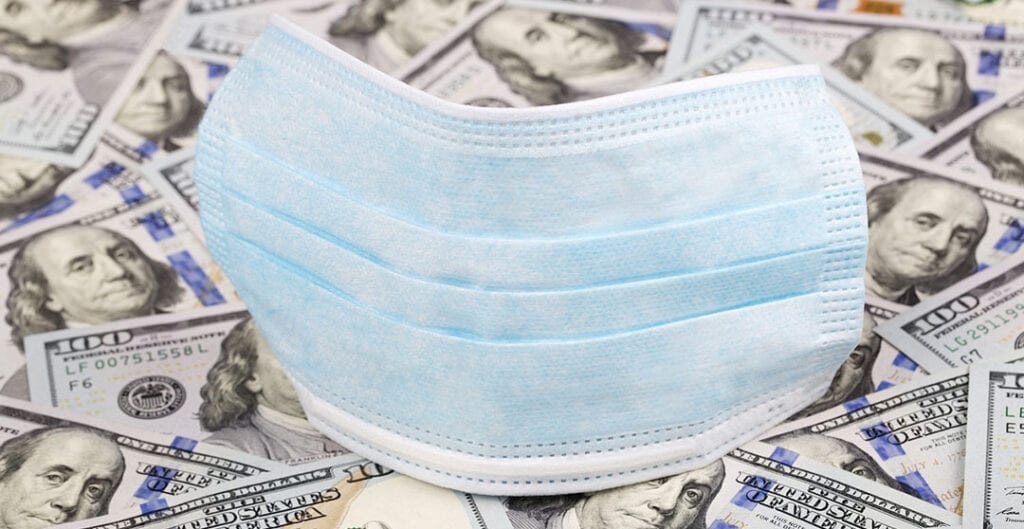
Metro Manila has had a backslide and is back to a modified ECQ from August 4 to 18, 2020. To be fair, at least 126 other COVID19-affected countries are also experiencing a new wave of COVID-19 infections. It is scary, as I remember that the second of the 1918 Spanish Flu’s four waves was the deadliest of them all. The deadly second wave of the Spanish Flu was not due to lifting of quarantine, but the failure of public health policies as well as travel issues related to World War 1. Later studies have concluded that pandemics are a social problem, and not an individual problem, hence the importance of implementing an early quarantine and provision of free healthcare to all in need in order to prevent affected people from further spreading the deadly disease.
The mandate is clear: Get rid of COVID-19. The tools used include home quarantine, social distancing, face mask, no operation of non-essential business, no malls, and no public transportation. Restaurants are only available for delivery and take out. A limited number of persons per residence are allowed out at a time, with barangay permits needed. Realistically, we can only be hopeful that the virus will be defeated by vaccines sooner as some 165 vaccines are currently under development, 6 of which are already in phase 3 final testing, (meaning large scale, 30,000 respondents, in international markets). If these vaccines pass testing, the Philippines can obtain them in 2021, fingers crossed. The relationship between President Duterte and China will now be tested, if China will grant his request to sidestep equitable distribution criteria and consider the Philippines as a priority for the initial limited supply of the COVID19 vaccines, since 3 of the 6 vaccines in final testing are from China. But realistically, China is also friends with hundreds of other countries, so at the very least, a partial supply to benefit medical frontliners can be requested first. If political friendship will have political consequences, then the number of COVID-19 cases may qualify the Philippines as a priority recipient of vaccines since we are now the leading hotspot for COVID-19 in Southeast Asia. In strategy parlance, converting a weakness into a strength, there is at least a silver lining!
Enemy number two and three are just as deadly—the closure of many businesses and massive unemployment. With hardly any revenue and a multitude of costs, many SMEs will resort to self-preservation. Retrenchment will be the preferred option. In the USA, a third of the labor force have already claimed unemployment insurance, the highest ever since the 25% unemployment rate from their 2008 global financial crisis. The Philippines is expected to have 27% or 12 million of the 44 million labor force jobless by the end of 2020, if the prediction of Trade Union Congress of the Philippines (TUCP), the largest labor union of the Philippines, will be correct. But this may be conservative as a June 4-17, 2020 survey from the Department of Trade and Industry (DTI) revealed 26% of businesses have already closed with only 22% in full operation.
Restaurants will be hit the hardest. They can’t operate unless they provide delivery, and they end up competing with many other businesses and individuals who have pivoted to supplying food as their new livelihood. The primacy of corporate branding versus personal relationship as a simplifier of choice will continuously be tested. Apps and delivery services have provided an equalizer for small food suppliers to compete with the Goliaths in the restaurant industry. Remote work will encourage more home cooking and baking. Throw recession into play, and traditional strength becomes a new weakness during the lockdown. Jollibee, the biggest restaurant chain in the Philippines, already lost P10 billion in the first six months of 2020, and they have also discovered their business model should switch over to delivery from inexpensive cloud kitchens located in a side street, not from an expensive and huge restaurant located along a busy main street. The critical success factors are changing. Business model shifts take supremacy before any creative marketing can be implemented. Meanwhile, SWS recently reported 20.9% or 5.2 million Filipinos have experienced involuntary hunger, despite the government sending rescue money to 18 million low-income households and 3.1 million workers of small businesses, encompassing 85% of households.
Stimulating consumption is a major solution to soften the impact of a recession. With a total of three months in lockdown, affecting 25% of the year not in operations, it does not take a genius to know SMEs do not net 25% in profit (assuming equal monthly sales) so most of them already know they will lose money in 2020, with a segment likely choose to close their business rather than continuously spend from their savings. After all, they can just relaunch in better times. The personal consumption expenditures of the Philippines account for three-fourths of its GDP, and has dropped by 15% versus the first quarter 2020. The drop will continue unless the trend is reversed in a recession, where the Philippines registered the biggest decline in GDP among its Southeast Asian peers. The Philippine Government will have to step in with consumption stimulus, not just lowering corporate income taxes (from 30% to 25%) as a 5% saving will not matter to SMEs who are losing money anyway! The priority is consumption stimulation. Meantime, business confidence keeps decreasing.
Below is the data of selected ASEAN countries containing their gross domestic products (GDP), their growth rate, and any economic stimulus to date for easy comparison of entrepreneurs and policy makers. It is noteworthy that while economic stimulus comes in various waves as countries do not want to overspend and raise their deficit too much, the Philippines has planned to use some 10% of the GDP to revive its economy, higher so far than Indonesia’s 4.3% but lower than that of Singapore’s 19.3, Malaysia’s 18.3 and Thailand’s 12.
Is a fourth wave of economic stimulus coming soon for the Philippines?
Economic Stimulus of Selected ASEAN Countries
| GDP 2019 | GDP Growth rate 2019 | GDP Growth Q2 2020 | Economic Stimulus (announced or committed as of July 2020) | % Economic Stimulus to GDP of 2019 | |
| Indonesia | US$1.1T | 5% | – 5.3% | US$47.6B | 4.3% |
| Malaysia | US$365B | 4.3% | – 17.1% | US$67B | 18.3% |
| Philippines | US$357B | 6% | – 16.5% | US$35B (US$13B in Pillar 1&2) | 10% |
| Thailand | US$529B | 2.4% | – 12.2 % | US$64.7B | 12.2% |
| Singapore | US$363B | 0.7% | – 12.6% | US$70B | 19.3% |
| Vietnam | US$262B | 7% | + 0.36% | US$12B | 4.6% |


